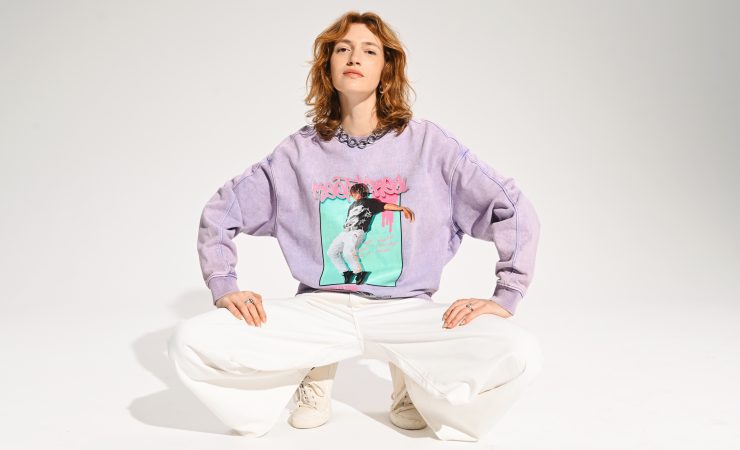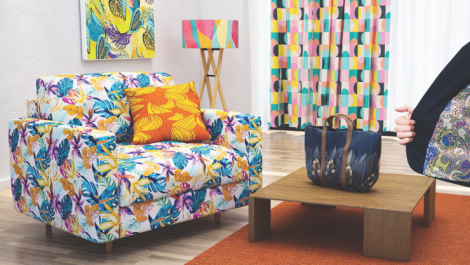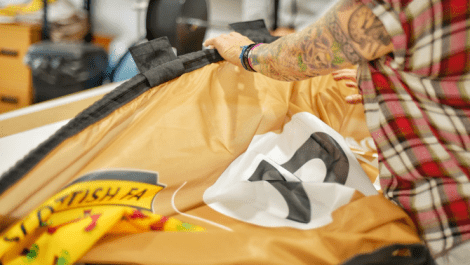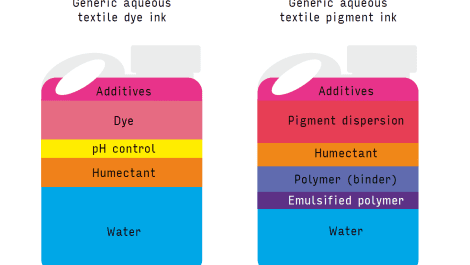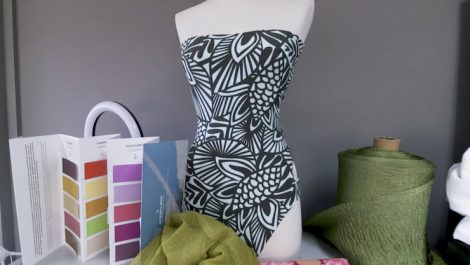With all the fuss around direct-to-film, you’d be forgiven for thinking that direct-to-garment was dead. But rumours of its death have been much exaggerated and now there’s a real choice. Digital Textile Printer asked two major DtG players for their take.
With the flurry of development around direct-to-film (DtF) technology showing no signs of abating, its garment decoration predecessor, DtG has perhaps been overlooked. To set the balance right, we asked two established players in the DtG field (who have also moved into DtF, it must be noted) to give us their views of its impact and how the two can coexist.
How has the DtG market been since Fespa and ITMA in 2023?
Folker Stachetzki, head of marketing at Brother Internationale Industriemaschinen (FS)
The DtG market has always been challenging due to its rapid technical developments. Even though we are successfully addressing these developments with our product portfolio, the economic situation and the resulting hesitation of customers to invest throughout the market made the hardware business more difficult in the past year
Sharon Donovich, marketing director at Kornit Digital (SD)
Kornit Digital has continued to make significant strides in the DtG market, solidifying its position as a leader in digital textile printing innovation. The DtG market itself is poised for remarkable growth, with projections indicating that it is expected to surpass US $861.2 million in 2024, highlighting the immense potential and opportunities in this sector. Kornit’s focus on sustainable, on-demand manufacturing has also garnered significant interest.
What has been the interest in Brother’s DtF capability introduced last year?

Folker Stachetzki of Brother ISM – market has levelled out
FS: Our long-standing customers are happy to have received a reliable solution from us to expand their production to include DtF. Many producers who want to produce using the DtF process are looking for reliable producers and therefore stable printers.
Kornit has only just introduced a DtF-like solution, at Fespa 2024. What has been the initial reaction?
SD: The innovative nature of Max Transfer as the industry’s first industrial solution tailored for direct-to-film (DTF) printing has undoubtedly captured the attention of industry insiders and potential customers alike. The solution’s ability to produce hundreds of impressions per hour without the mess of powders has piqued curiosity and raised the bar for on-demand production capabilities.
Has your DtG business been affected by the rising interest in DtF?
SD: While the rising interest in DtF may introduce competitive pressures, it also signifies an expansion of the overall market, offering opportunities for businesses to tap into new customer segments and diversify their product offerings. This evolving landscape necessitates a strategic approach, prompting businesses to assess their positioning, explore potential synergies between DtG and DtF technologies, and capitalise on the broader spectrum of opportunities arising from the convergence of these printing methods.
FS: This had an impact on the DtG business. Not just for us, but for the entire market. Now, however, the biggest boom is over and the market has levelled out in this respect. We have now reached a point where customers have already gained experience with DtF and can therefore select the DtF printers that best suit their requirements. It has become clear that customers are placing more and more value on quality and reliability.
What factors should new entrants to garment decoration consider when deciding between DtF and DtG?
FS: It is important to think about what exactly you want to sell later on and how you want to position yourself in the market. Both processes have their advantages and disadvantages in terms of quality, which materials can be printed and how you will be able to automatise and therefore optimise your production later on.
And you should never lose sight of the environmental aspect – if you want to produce sustainably, you should choose the right process

Sharon Donovich, Kornit Digital – decisions must align with business objectives
SD: New entrants must deliberate on the intricacy and diversity of their designs. DtG prints typically incorporate a white base exclusively when the design is applied to a coloured or black garment. On the other hand, DtF provides the advantage of a wide range of colour options and the capability to print on both dark and light garments.
DtG is well-suited for smaller print runs, while printing offers benefits such as low production costs; DtF is known for its adaptability across a wide range of fabrics.
Relating to tradeoff between capex and labour, DtG is operated by a minimum staff of one or two people; DtF is a multi-process solution that requires more.

